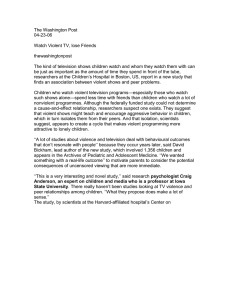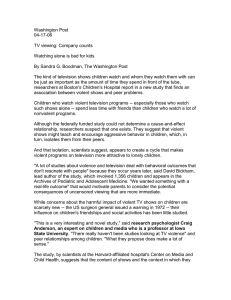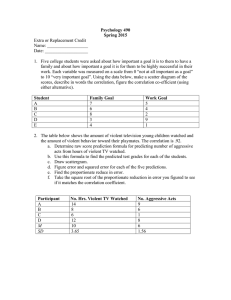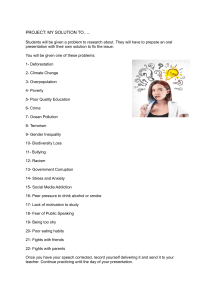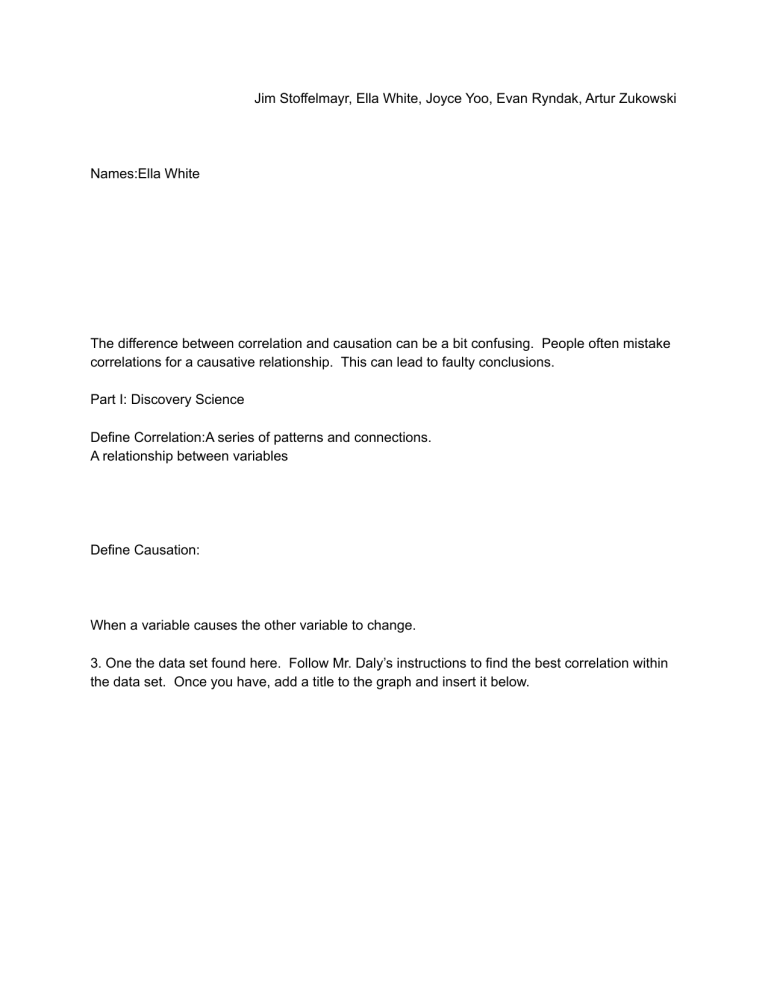
Jim Stoffelmayr, Ella White, Joyce Yoo, Evan Ryndak, Artur Zukowski Names:Ella White The difference between correlation and causation can be a bit confusing. People often mistake correlations for a causative relationship. This can lead to faulty conclusions. Part I: Discovery Science Define Correlation:A series of patterns and connections. A relationship between variables Define Causation: When a variable causes the other variable to change. 3. One the data set found here. Follow Mr. Daly’s instructions to find the best correlation within the data set. Once you have, add a title to the graph and insert it below. 4. Summarize what the graph shows in words. The graphs the relationship(correlation) between the number of fights each month and the number of hours of violent television watched. 5. Propose 4 possible explanations for the observed correlation. i. The fighting strikes an interest in violence which means the subject watches more violent television. ii. The subject watches numerous hours of violent television which causes them to be more violent and get into fights. iii. A parent at home is interested in violence, so they watch violent tv shows and encourage their child to be ‘tougher’(violent) so the child watches tv and gets into fights. iv. There is no correlation between the two. A mere coincidence. Procedure -Part 2: Hypothesis-Driven Science 6. Finally, design an experiment to test one of your explanations in an attempt to establish causation. Identify the experimental and control groups in your experiment as well as all of the variables. Include all of the above along with a short description of the procedure in the space below. Hypothesis - Violent television can cause the kids to engage in fights. Prediction - Group B will tend to get into less fights Control Group - Group B (not exposed to violent television) (5000 participants) Experimental Group - Group A (exposed to violent television) (5000 participants) Independent Variable - Violent Television Dependent Variable - if the students get into fights or not Procedure - The 5000 kids will be divided into two groups; Group A and B. Group A will be exposed to violent television, while Group B will not watch violent TV. Each group (A and B) will go to school separately and will be kept for talking or interacting with each other and we would let the school go as it would while gathering the data where a lot of fights occurred so that students would encounter situations where they would either fight or not fight, and recording who does get into fights. Then at the end of the experiments we would look at if the group without violent tv had gotten into less fights.
